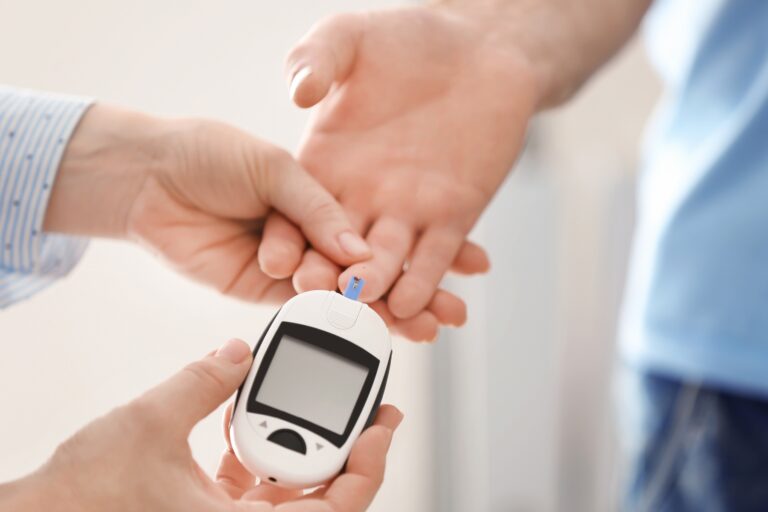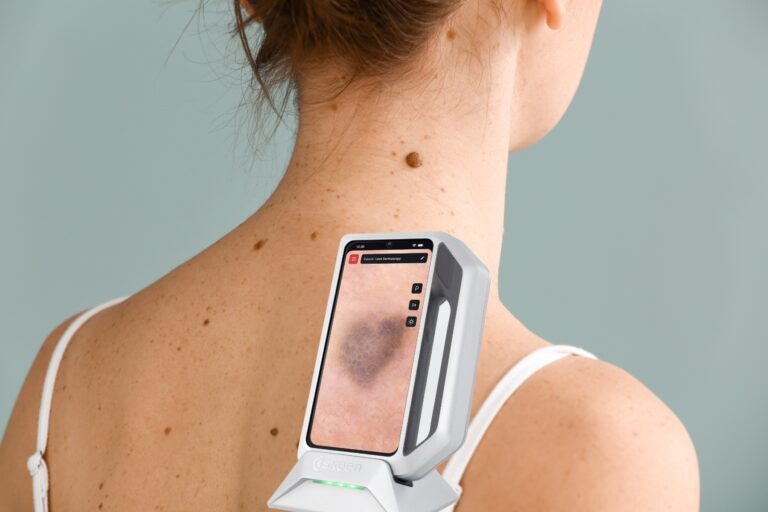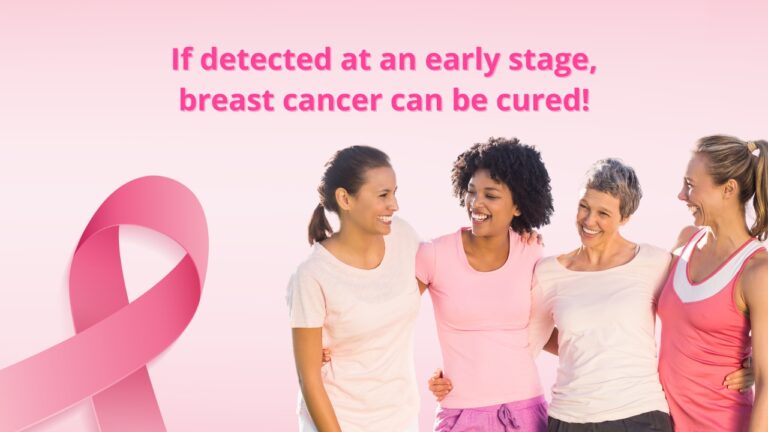Let’s start with the anatomy of the breast. A normal breast consists primarily of mammary glands that produce milk when one is pregnant. These glands are connected to the surface of the nipple by ducts. The glands and ducts are supported by connective tissue made of fat and fibrous material. The rest of the breast tissue consists of blood vessels, nerves, lymphatic channels, and lymph nodes.
Like all forms of cancer, the abnormal tissue that makes up the tumor is the patient’s own cells that multiply in an uncontrollable way. Those cells can also travel to locations in the body where they would not normally be found. Breast cancer usually begins when a small tumor, or lump, begins to form, spreading through channels within the breast then on through the lymphatic system to the lymph nodes or the bloodstream on to other organs.
The tumor can grow and cover the tissues around the breast. Depending on the type of cancer, it can grow and spread at different rates, some may take years while others will grow and spread rapidly.
Not all lumps are cancerous, but those that aren’t may be premalignant. The only way to determine whether a lump is cancerous or not is to have the tissue examined by a doctor through a biopsy or removal of the lump.
What is the cause of breast cancer?
Though it is a concern of many, still nobody knows the exact causes of breast cancer. The only thing that is certain is that breast cancer is always caused by a damage to the DNA of a cell.
Many of us are prone to wrongly believe that particular things and activities are able to cause breast cancer. Some of those concerns include drinking caffeinated beverages such as coffee and tea, using deodorant, microwave ovens, cell phones, or coming into contact with someone who has breast cancer.
There are other factors, however, that seriously increase the chance of getting the disease. Some can be avoided, like drinking alcohol, which increases levels of estrogen and other hormones associated with hormone-receptor-positive breast cancer, but there are others such as a family history of breast cancer, which can not be avoided. Having risk factors doesn’t mean that a woman will certainly get the disease; there are many women living with serious risk factors who never develop breast cancer.
Studies have shown that out of eight women that live to be 85 or older, just one will develop breast cancer at some point in her life, that’s 12.5%. Two thirds of all women who have breast cancer are over 50 and the rest are between 39 and 49.
Although it is extremely uncommon, men can develop breast cancer as well. From all the breast cancer cases in the world, just 1% of them are accounted by men. For women, it is the most common type of cancer.
Types of treatment
Although many of women survive breast cancer, still a large number of them do not. In order to save as many women as possible, there are different types of treatments to apply. The most common types of therapy are radiation, chemo, hormone and targeted therapy, as well as surgical procedures.
- SURGERY
Most women with breast cancer undergo some type of surgery leading to the removal of the tumor. The surgery may be one which is breast-conserving, or a more invasive procedure called a mastectomy where the breast has to be removed. Fortunately for many women the breast can be reconstructed at a later date after a mastectomy. - RADIATION THERAPY
This treatment uses high energy rays or particles to destroy cancer cells. Radiation to the breast is usually given after a breast-conserving surgery to help lower the possibility that the cancer reappears in the breast. Radiation therapy is also recommended after mastectomies. - CHEMOTHERAPY
Chemotherapy uses cancer-killing drugs that may be given intravenously or by mouth. Those drugs travel via the bloodstream to reach cancer cells in most parts of the body. Chemotherapy is given in cycles, where periods of treatment alternate with recovery periods. - HORMONE THERAPY
This is a systemic therapy that helps reduce the risk of cancer recurrence after surgery. It is also used to treat recurrent cancer and keep it from metastasizing, i.e., spreading, to other parts of the body. - TARGETED THERAPY
Ever more facts have been revealed lately through researches about the changes in genes in cells, which consequently cause cancer. Researchers have developed newer drugs that target those changes. The targeted drugs work in a different way from chemotherapy drugs and have less severe side effects.
Support
Breast cancer patients need support from friends and family. This is a disease that is very hard to deal with, not only physically but emotionally as well. Doctors always attempt to keep patients positive and let them have a normal life, as it has been proven that a positive attitude helps beat the disease.
There are innumerable campaigns and organizations that aid women with cancer providing them with moral and economic support. We all have seen its symbol, the pink ribbon somewhere; either on TV, in magazines or it is also common to see athletes and celebrities wear the ribbon or something pink to show their support.
During the month of October FirstMed encourages all at-risk women, either because of age (over 50) or family risk factors, to speak with their doctor about breast cancer. To show our support for early detection these women will receive a free mammogram* with their annual gynecological exam during the month of October. Please call FirstMed to schedule your appointment.
*This offer is valid for women deemed ‘at risk’ either by age or family history. Ultrasounds or other tests recommended by the doctor will require extra fees.





